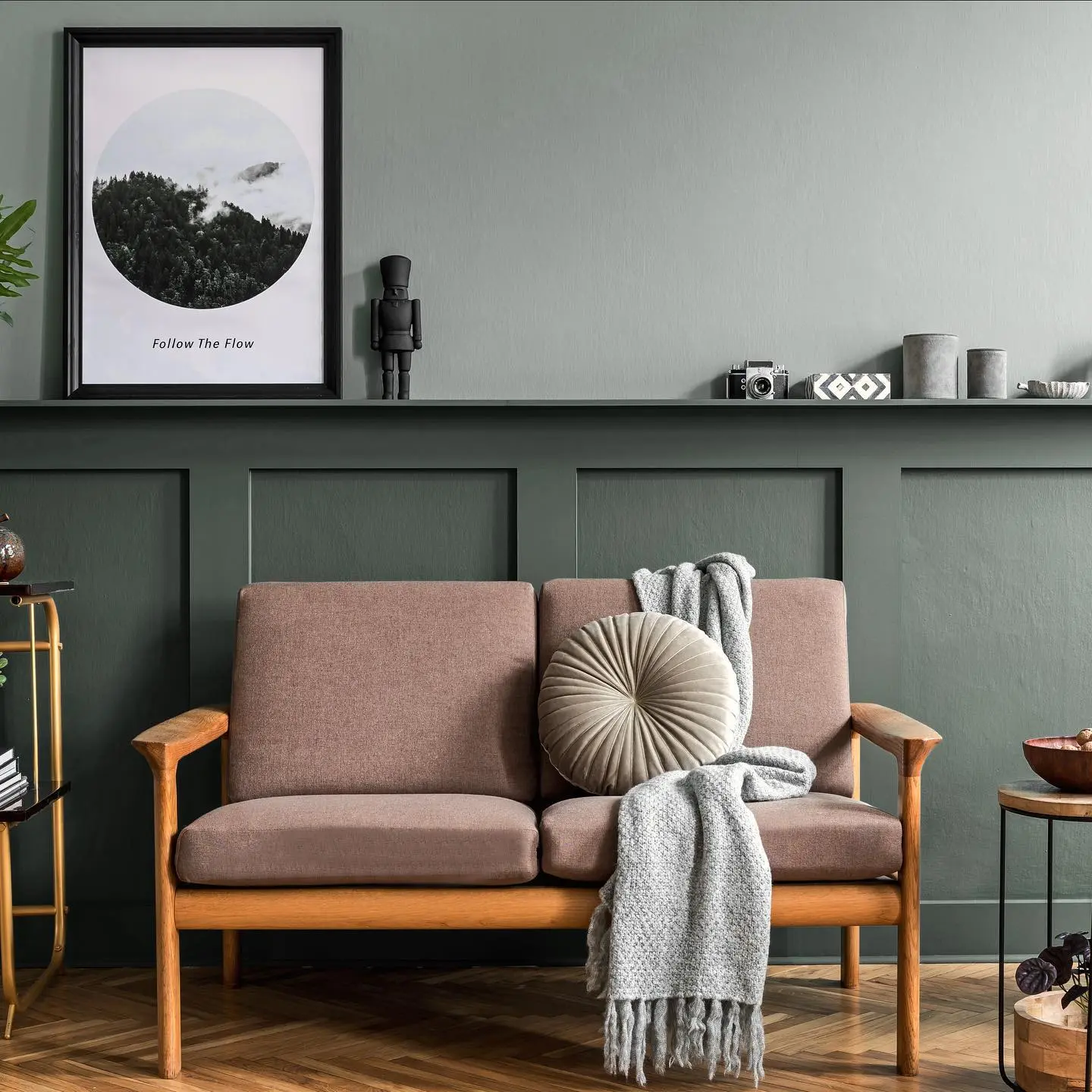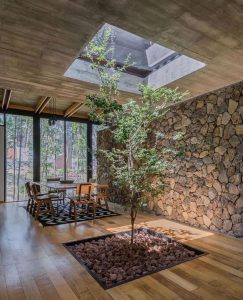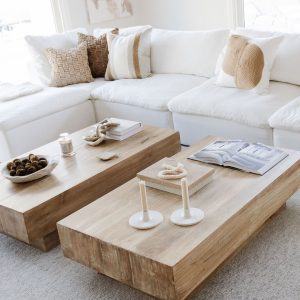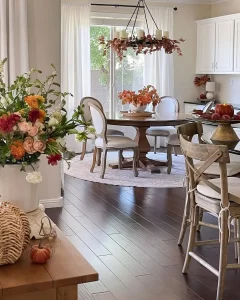‘How to Avoid Common Mistakes When Decorating with Color‘ isn’t just a guide. It’s your ally in transforming your home with confidence and creativity.
Embarking on the journey of adding color to your home can feel like navigating a minefield of dos and don’ts.
From the mood-altering effects of hues to the perceived size of your spaces, color has the power to change not just the look, but the feel of your home.
This post was written to walk you through it all, step by step, ensuring you’re well-equipped to make choices you’ll love long term.
We start with lighting. We’ll see how lighting is a game-changer for how colors perform in your home.
Then, we tackle the challenge of creating a color scheme that not only looks good but feels right, weaving through your spaces with grace.
The psychology of color is up next, offering a peek into how different shades can affect our emotions and set the tone for our daily lives.
How to Avoid Common Mistakes When Decorating with Color
But it’s not just about color on the walls.
Adding texture and pattern can elevate your space from flat to multidimensional, bringing an exciting layer of complexity.
And let’s not forget about the finish of your paint; it can make all the difference in achieving the ambiance you’re after.
Through strategic decor choices and embracing your unique style, this guide empowers you to refresh your space with ease and flair.
Bear in mind that as your style evolves, so can your color palette, adapting to reflect who you are at every stage.
With practical advice and answers to your burning questions, we’re here to help you bring your vision to life, one color choice at a time.
Avoid Common Mistakes When Choosing Colors
Overlooking the Importance of Lighting
Natural light brings out the truest color, while artificial lighting can shift colors towards warmer or cooler tones.
- Natural Light: South-facing rooms get warmer, golden light, making cool colors appear brighter and warmer colors richer. North-facing rooms, however, have cooler, more consistent light, which can amplify cool tones and mute warm ones.
- Artificial Light: Incandescent bulbs produce warm light that enhances reds, oranges, and yellows, while fluorescent lighting offers a cooler, bluish light that can make cool colors pop but dull warm colors.
Tip: Test Before You Commit
Always test paint colors in your space with large swatches on the walls, observing how they change with both natural and artificial light at different times of the day. This step is crucial to avoid surprises after you’ve committed to a color.
Forgetting About Color Balance
Balancing color is key to creating a harmonious space that feels cohesive and thoughtfully designed. This involves mixing not only different colors but also considering their saturation and brightness.
- Warm and Cool Tones: A mix of warm (reds, oranges, yellows) and cool (blues, greens, purples) tones can create a dynamic yet balanced space. Too much of one can make a room feel monotonous or uninviting.
- Neutral Foundations: Neutrals (beige, gray, white) provide a versatile backdrop that allows colors to shine without overwhelming the space. They are excellent for walls, large furniture pieces, and flooring.
Tip: The 60-30-10 Rule
A tried-and-true method for achieving balance is the 60-30-10 rule, where 60% of the room is your dominant color (usually a neutral), 30% is a secondary color, and 10% is an accent color. This formula ensures that colors are distributed in a way that feels natural and pleasing to the eye.
Ignoring the Color Flow
The color flow refers to how the color scheme transitions from one room to another, creating a cohesive look throughout your home. Ignoring this can result in a disjointed or chaotic feel as you move through different spaces.
- Unified Palette: Select a base color that serves as a unifying element across rooms, whether it’s a neutral or a soft hue that can be adjusted in saturation for variety.
- Accent Colors: Use accent colors to define individual spaces without breaking the overall flow. These can vary between rooms but should all work with the base color.
Tip: Visualize the Whole Home
When planning your color scheme, consider how each room connects and flows into the next. A cohesive color scheme doesn’t mean all rooms look the same, but there should be elements that link them together, such as repeating a specific color, texture, or pattern.
Understanding Color Psychology for Harmonious Home Interiors
Color is not just a visual element; it’s a psychological tool that can affect mood and behavior. By understanding the emotional impact of different colors, you can create spaces that enhance well-being and reflect the desired atmosphere of each room.
Setting the Right Mood with Color
- Relaxing Spaces: Blues and greens are ideal for creating a calming atmosphere, perfect for bedrooms and bathrooms where relaxation is key.
- Energizing Areas: For spaces where energy and interaction are encouraged, such as kitchens and living rooms, warm tones like reds, yellows, and oranges can stimulate conversation and appetite.
Tip: Consider Room Function
Think about the primary function of each room and how you want to feel in that space. This can guide your color choices to support activities, whether it’s rest, work, or play.
Using Color to Influence Perception
Colors can also alter the perception of space, making rooms feel more spacious or cozy.
- Expanding Small Spaces: Light and bright colors, such as soft blues, greens, and off-whites, can make small rooms feel larger and more open.
- Cozying Up Large Areas: Darker shades, like navy, deep green, or rich browns, can make expansive rooms feel more intimate and grounded.
Tip: Test Colors in Your Space
Before finalizing your choice, paint large swatches on the walls to see how colors affect the room’s perception under different lighting conditions.
Adding Depth to Your Home with Textures and Patterns
Adding texture and pattern can introduce depth and interest, enhancing the visual impact of your color choices and preventing spaces from feeling flat or monotonous.
Balancing Color with Texture
Textures can soften or intensify colors. A matte finish can make bold colors feel less overwhelming, while a glossy finish can make muted colors pop.
- Mix Textures: Combine different materials, such as smooth leather, plush fabrics, and rough wood, to create a balanced and inviting space.
Using Patterns to Complement Colors
Patterns can help distribute color throughout a room and tie different elements together.
- Pattern Scale: Large patterns can make a bold statement in spacious rooms, while small patterns are better suited for cozy spaces or accent pieces.
- Coordinating Colors: Choose patterns that incorporate both your primary and accent colors to unify the space’s color scheme.
Tip: Start with a Focal Point
Use a patterned piece, like an area rug or a piece of art, as the starting point for your color and pattern choices, building the room’s palette around it.
Guide to Choosing Paint Finishes for Every Room
The finish of your paint not only affects the color’s appearance but also its durability and suitability for different spaces.
Understanding Paint Finishes
- Matte: Provides a non-reflective finish ideal for hiding wall imperfections but can be less durable.
- Eggshell and Satin: Offer a balance between matte and gloss, providing some sheen without being too shiny and are easier to clean than matte finishes.
- Semi-Gloss and Gloss: Highly reflective finishes ideal for areas that need frequent cleaning, such as kitchens and bathrooms.
Choosing the Right Finish for the Right Room
- Living Rooms and Bedrooms: Eggshell or satin finishes work well, providing a soft sheen that enhances the color without overpowering the space.
- Kitchens and Bathrooms: Opt for semi-gloss or gloss finishes for moisture resistance and ease of cleaning.
- Ceilings and Low-Traffic Areas: Matte finish is often preferred for its non-reflective quality, creating a smooth look that hides imperfections.
Tip: Consider the Lighting
The finish can affect how color looks under different lighting conditions. Glossier finishes reflect more light, which can alter the color’s appearance throughout the day.
Refresh Your Space: Using Accessories to Add Pops of Color
Beyond the walls, color can be introduced in various ways to enhance or completely transform the mood and style of a room. Accessories and decor are powerful tools for injecting color and refreshing your space without a major overhaul.
Strategic Use of Accessories
- Accent Pieces: Cushions, throws, and rugs can introduce pops of color, texture, and pattern, making a room feel dynamic and cohesive.
- Artwork and Wall Decor: These elements can serve as focal points or sources of inspiration for a room’s color palette, tying together different hues in the decor.
Tip: Balance and Harmony
When adding colorful accessories, consider the overall balance of the room. Aim for a harmonious distribution of color, using the 60-30-10 rule as a guideline for proportion.
Refreshing with Decor Updates
Changing or rotating decor seasonally or as desired is an excellent way to refresh a space. This flexibility allows for experimentation with trends, seasonal colors, or simply a change of mood.
- Seasonal Adjustments: Swap out accessories like throw pillows, blankets, and table linens to reflect the season’s colors and textures.
- Trend Exploration: Use decor items to play with color trends without committing to permanent changes.
Tip: Keep a Neutral Base
Maintaining neutral colors for larger furniture pieces and walls makes it easier to update the look of a room with colorful accessories and decor.
Defining Your Space: Personal Style and Color Selection
While trends can provide inspiration, the most important aspect of decorating with color is to reflect your personal style and preferences. Your home is a reflection of your personality, and the colors you choose should make you feel comfortable and happy.
Identifying Your Color Preferences
- Inspiration Sources: Look to your wardrobe, favorite artwork, or nature for color inspiration that truly resonates with you.
- Mood Boards: Create mood boards with fabrics, paint swatches, and images to visualize how different colors work together.
Tip: Trust Your Instincts
If you’re drawn to certain colors, there’s likely a reason. Trust your instincts and find ways to incorporate those hues into your decor, even in small doses.
Experimenting with Color Confidence
- Start Small: Begin with a small, low-commitment project like painting an accent wall or adding colorful accessories to gain confidence in your color choices.
- Evolve Gradually: Allow your color scheme to evolve over time. As you become more comfortable with color, you may find yourself making bolder choices.
Tip: Embrace Change
Don’t be afraid to change things up. Your color preferences may evolve, and that’s part of the journey. Embrace change and experiment with new hues as your style grows.
Creating a Cohesive Color Flow Throughout Your Home
A cohesive color scheme across your home doesn’t mean every room must be painted the same color.
Instead, it’s about creating a smooth transition from one space to another, ensuring a sense of unity while allowing each room to have its own character.
Creating a Color Story
- Use a Core Palette: Choose a core palette of three to five colors that will flow throughout your home, creating a sense of continuity.
- Accent Colors for Individuality: Introduce different accent colors in various rooms to give each space its own identity while still maintaining a cohesive look.
Tip: Consistent Elements
Incorporate consistent elements, such as trim color or flooring, throughout the home to further unify the spaces.
Transitioning Between Spaces
- Visual Flow: Consider the sightlines from one room to another. The colors in adjoining spaces should complement each other to avoid visual jarring.
- Repeating Elements: Repeat certain colors, textures, or patterns in adjacent rooms to create a seamless transition.
Tip: Use Hallways as Neutral Zones
Treat hallways as neutral zones that bridge more colorfully diverse rooms, using them to transition smoothly between different color palettes.
Why Testing Paint Colors Is Essential for Home Decorating
Before committing to a color scheme, it’s crucial to test your colors in the intended space. This step can prevent costly and time-consuming mistakes.
Sample Paints and Fabrics
- Sample Boards: Paint large boards with your chosen colors to move around the room at different times of day to see how light affects them.
- Fabric Swatches: If incorporating colored fabrics, get swatches to see how they look with your paint choices and under various lighting conditions.
Tip: Live with It
Allow yourself a few days to live with your color choices before making a decision. Your perception of the color might change as you see it in different lights and contexts.
How to Update Your Home’s Color Palette as Your Style Evolves
Embracing Change
- Seasonal Updates: Consider changing accessories, like throw pillows or curtains, with the seasons to refresh your space without a complete overhaul.
- Growth and Evolution: As your taste evolves, so too can your color scheme. A flexible approach allows your home to grow with you.
Tip: Incremental Changes
Small, incremental changes can have a big impact. Updating a single accent color or adding a new piece of art can refresh a room without the need for a major redesign.
Conclusion
Frequently Asked Questions
1. How do I correct a color choice that feels wrong after painting?
If a color doesn’t feel right after painting, consider adjusting the lighting or decor first, as these can significantly impact color perception. If the color still isn’t suitable, opt for a more neutral shade or a hue you’re confident you’ll enjoy, using sample swatches extensively before repainting.
2. Can different shades of the same color work together in one space?
Absolutely! Using various shades of the same color can add depth and interest to a room. This monochromatic approach is cohesive yet dynamic, especially when you incorporate a range of textures and finishes.
3. How do I deal with rooms that have little natural light when choosing colors?
In rooms with limited natural light, opt for lighter and warmer colors to make the space feel brighter and more inviting. Reflective surfaces and strategic lighting can also enhance the effect of your chosen colors.
4. What’s the best way to incorporate black or very dark colors into my decor?
Black or dark colors can add sophistication and depth to a space. Use them as accent colors in textiles, furniture, or an accent wall. Pairing dark colors with lighter tones and plenty of lighting can prevent the space from feeling too enclosed.
5. How important is the finish of the paint when choosing a color?
The finish of the paint is very important as it affects both the appearance and durability of the color. Matte finishes are great for hiding imperfections but can be less durable, while glossy finishes are easier to clean but highlight wall imperfections. Choose based on the room’s function and maintenance needs.
While classic colors ensure longevity, incorporating trendy colors can refresh and modernize your space. Use trendy colors in accessories or as accent walls for easy updates without long-term commitment.
7. Can I use bold colors in small spaces?
Yes, bold colors can work in small spaces if used thoughtfully. Consider using bold colors for an accent wall or in decor details to add vibrancy without overwhelming the space. Pairing bold colors with neutrals can also balance the overall effect.
8. How can I ensure my home’s color scheme flows well from room to room?
To create a cohesive flow, use a consistent color palette throughout your home, varying the dominant and accent colors from room to room. Consider visual sightlines and use transitional spaces like hallways to naturally shift between color schemes.
Related Posts:
- How to Use Earthy Colors to Soothe Your Space and Soul
- How to Avoid Common Mistakes When Decorating Small Spaces
- How to Avoid Common Mistakes When Decorating on a Budget
- How to Avoid Common Mistakes When Decorating a Rental
- How to Avoid Common Mistakes When Styling With Plush Rugs
- 5 Common Mistakes to Avoid When Decorating a Scandinavian Living Room




